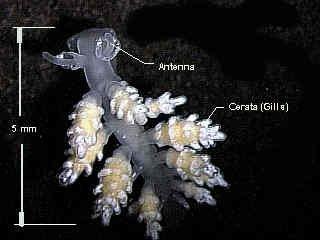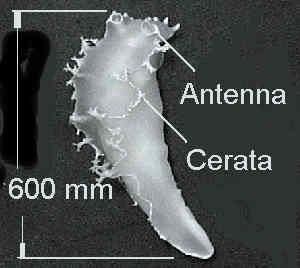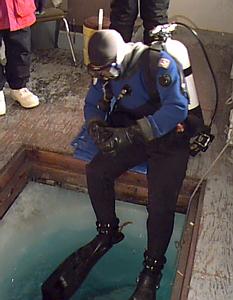22 October, 1996
One of my responsibilities on Tuesdays is to feed the anemones that we use
in bioassays. Once a week they get one freeze-dried krill. An anemone looks
more like a plant than an animal. It has an array of tentacles that move
above its body like branches on a bush. The tentacles move through the water
column and wrap around objects that touch them. It has a mouth in the center
of the ring of tentacles which it shoves its prey into along with its
capturing tentacles. They look like they are licking their fingers after a
meal.
The anemones, along with a number of other organisms, are kept in an
aquarium building near the ice edge. Typically Jim, Pat, or scientist from
other groups conduct experiments with the animals that are housed there. I
saw several rather strange creatures that I didn't recognize. One looked
like a white slug. I asked Pat about it and why it had been collected. I
also asked him if he would write about his experiment. He decided we should
include some pictures and identify the body parts of the organism he was
studying. Getting the pictures that I've included took me the rest of the
evening. This is great for me, every day is a new learning experience.
Pat Bryan's work with Nudibranchs
"I am studying both juvenile and adult nudibranchs or shell-less snails
called Tritoniella belli. These are organisms that obtain chemical defenses
through their diet. The juvenile shown is about 5 millimeters long and the
majority of its body mass is covered with cerata or gills. The adult stage
is also shown. A juvenile is defined as the developmental stage of an
organism that follows larval settlement or hatching from an egg, yet
proceeds adulthood. Adulthood is defined by reproductive maturity. Juveniles
often occupy distinctly different ecological niches than adults of the same
species. They often eat different foods, live in different microhabitats,
and have different predators than adults. Yet because of the small size and
often-cryptic (hidden) behavior of most juvenile marine organisms, very
little is known about them.
In the Antarctic, performing research in the field is extremely difficult,
especially when you are diving to a depth of 100 feet in water that is -1.8
C. Fortunately, I managed to find juveniles of the Antarctic nudibranch
Tritoniella belli hiding among the branches of an Antarctic hydroid.
Nudibranch's often incorporate chemical or structural defenses from their
diet into their tissues. However, the mechanism of "borrowing" defenses from
other organisms is poorly understood. By studying juvenile nudibranchs we
may be able to determine how these types of mechanisms develop and are used
by the adults.
My specific interests concern the development of chemical defense
strategies in marine invertebrates. I want to find out if organisms that
possess some type of a defense as an adult possessed this same defense all
their life or if the defense is specific to the adult stage. Moreover, if
juveniles do have different predators and diets than adults of the same
species, they may utilize different defensive strategies than the adults.
Hopefully, I will be able to determine if juvenile Tritoniella belli can
defend themselves from predation and if this defense differs from the
defense strategy used by adults. If the defenses are different, I would like
to find out how and when the change takes place. With the help of everyone
in S-022, we will find out all about this nudibranch during this season on
the ice."



Contact the TEA in the field at
.
If you cannot connect through your browser, copy the
TEA's e-mail address in the "To:" line of
your favorite e-mail package.
|
